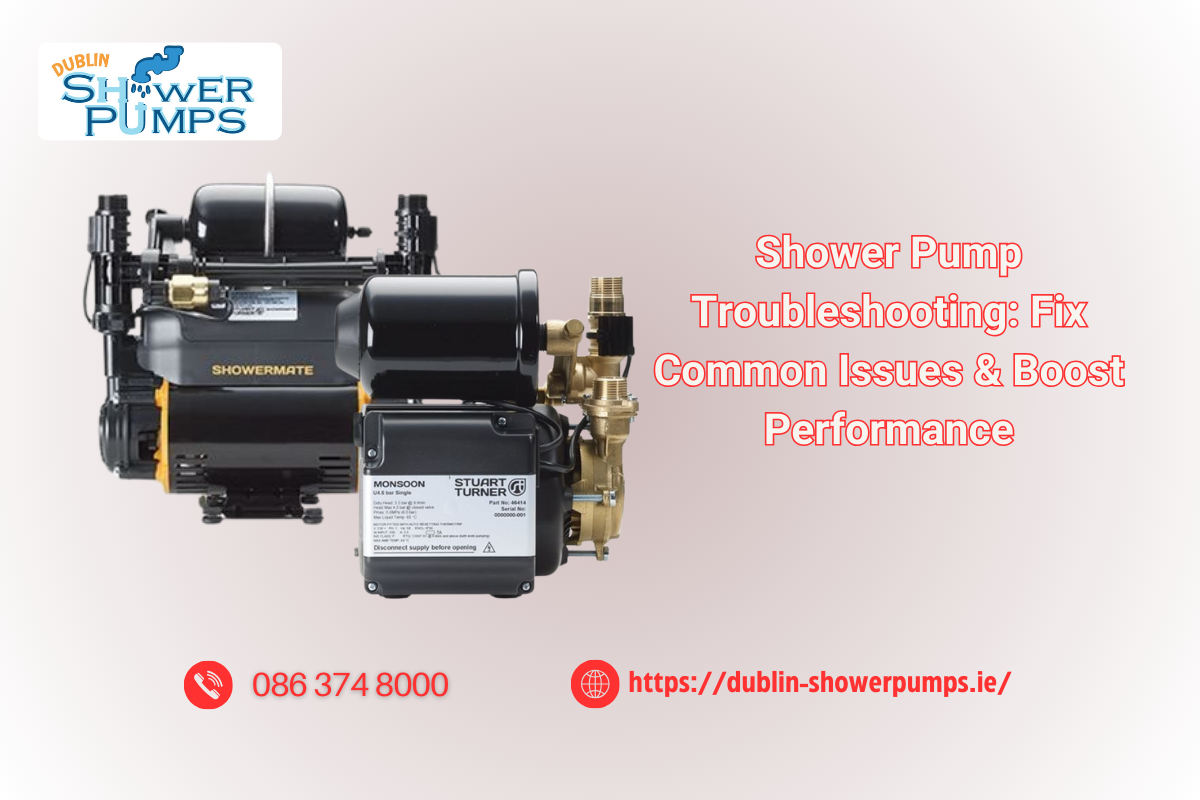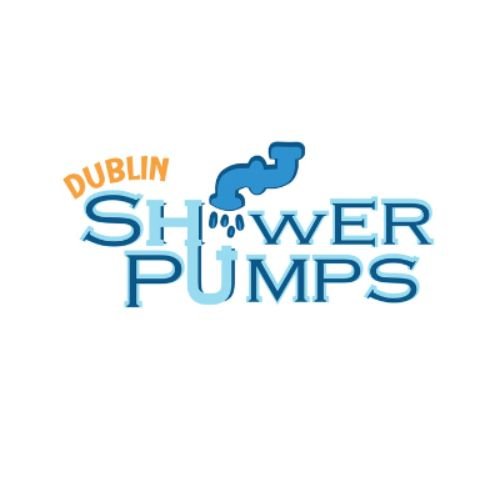Shower Pump Troubleshooting: Fix Common Issues & Boost Performance
At Dublin Shower Pumps, we understand the importance of maintaining a high-performing shower system. A reliable shower pump ensures optimal water pressure, enhancing your daily bathing experience. However, like any mechanical device, shower pumps can develop issues over time. This guide will help you troubleshoot common problems and provide solutions to keep your system running efficiently.

Understanding Shower Pumps
Before diving into shower pump troubleshooting, it’s essential to understand their role in your plumbing system. A shower pump enhances water pressure in homes with low water pressure or gravity-fed systems. These pumps help maintain consistent water flow, ensuring a powerful and enjoyable shower experience. If you’re new to shower pumps, check out our Understanding Shower Pumps: Mechanics and Benefits for a comprehensive breakdown.
Common Shower Pump Issues and How to Fix Them
1. Low Water Pressure
One of the most common problems is low water pressure, which can be due to:
Blocked Filters: Over time, debris accumulates in the filters, restricting water flow. Cleaning them regularly is crucial to maintaining efficiency.
Pipe Blockages: Clogged pipes reduce water pressure. Inspect and clear obstructions to restore normal water flow.
Pump Malfunction: If the pump fails to generate sufficient pressure, it may require repairs or replacement. Check our guide on Common Shower Pump Replacement Problems for further assistance.
Incorrect Shower Pump Selection: Using an unsuitable pump for your water system can lead to inadequate pressure. Learn How to Choose the Best Shower Pump to ensure optimal performance.
Leaks in the System: Even small leaks can significantly reduce water pressure. Inspect all connections and seals to prevent water loss.
2. Pulsating Water Flow
Fluctuating water flow can be frustrating. Common causes include:
- Air Locks: Trapped air in the pipes disrupts water flow. Learn How to Prevent Airlocks in a Shower Pump to avoid this issue.
Faulty Pressure Switch: A malfunctioning pressure switch can lead to inconsistent flow and may need replacement.
Insufficient Water Supply: If the shower pump does not receive enough water, the flow may pulse due to dry-running protection kicking in.
Worn-out Valves: A failing non-return valve can cause erratic flow. Inspect and replace if necessary.
3. Excessive Noise
If your shower pump is making too much noise, possible causes include:
Vibration: Ensure the pump is securely mounted to minimize noise.
Cavitation: This occurs when the pump isn’t receiving enough water, causing air bubbles to collapse violently. Read Shower Pump Noise: Causes and Solutions to identify the best solutions.
Aging Components: Worn-out parts can cause increased noise levels. Consider Replacing a Shower Pump for quieter operation.
4. Pump Keeps Turning Off
If your shower pump frequently shuts off, possible reasons include:
Overheating: Running the pump continuously can trigger an automatic shutdown. Allow it to cool down between uses.
Electrical Issues: Faulty wiring or a tripped circuit breaker may cause the pump to turn off unexpectedly.
Flow Sensor Malfunction: If the pump does not detect water flow correctly, it may shut down unnecessarily.
5. Constant Humming Noise
A persistent humming noise may indicate:
Seized Motor: If the motor hums but doesn’t turn, it may be seized and require manual rotation or professional assistance.
Electrical Faults: Loose wiring or damaged components may also cause the motor to hum without functioning properly.
Troubleshooting Steps
Step 1: Perform Basic Checks
Ensure the pump is receiving power.
Check for adequate water supply and any blockages.
Step 2: Inspect Filters and Pipes
Remove and clean clogged filters.
Inspect pipes for leaks or obstructions.
Step 3: Address Noise Issues
Secure the pump properly to minimize vibrations.
Check for cavitation and ensure a steady water supply.
Step 4: Troubleshoot Electrical Problems
Inspect wiring for wear or damage.
Reset the circuit breaker if needed.
Step 5: Seek Professional Help
If issues persist, contact Dublin Shower Pumps for expert assistance. Need a replacement? Check out How to Replace a Shower Pump for step-by-step guidance.
Preventive Maintenance Tips
To prevent future shower pump troubleshooting issues, follow these maintenance tips:
Regular Cleaning: Keep filters clean to maintain optimal performance.
Monitor Water Quality: Hard water can cause mineral buildup—consider a water softener.
Professional Inspections: Annual checkups can identify potential problems early.
Upgrade When Necessary: Explore Top Shower Pump Brands for the best-rated options.
FAQ: Shower Pump Troubleshooting
Check the power supply, filters, and pipes for blockages. If the motor isn’t running, there may be an electrical issue.
Clean the filters, inspect pipes for obstructions, and ensure the pump is functioning properly.
Yes! An efficient pump ensures less water wastage. Read How Shower Pumps Can Reduce Bills for more details.
Explore Top Shower Pump Brands for the best-rated options.
Check out our Guide to Shower Pump Installation for expert tips and Contact us for the expert services in Dublin.
Contact Dublin Shower Pumps
For expert shower pump troubleshooting, repairs, and installations, Dublin Shower Pumps is here to help.
📍 Address: 93 Avonbeg Gardens Tallaght D24 F3CP Ireland
📞 Phone: +353 86 374 8000
📧 Email: contact@dublin-showerpumps.ie
🌐 Website: https://dublin-showerpumps.ie
By following these shower pump troubleshooting steps and preventive measures, you can keep your shower pump in excellent condition for years to come.

